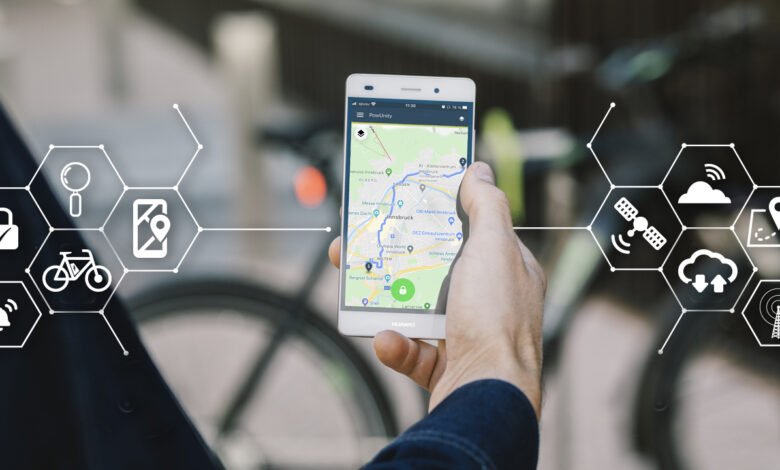What Are The Latest Innovations In Truck Tracking Systems?

Forget attempting to manually organize, carry out, and optimize the trips and operations of your fleet. The newest telematics technology is taking over, and manual techniques cannot compete.
Every day brings new changes to the monitoring dmaas and fleet management industry. Recent trends and innovations are revolutionizing the business due to the quick improvements in GPS tracking and fleet management technologies.
Fleet technology is keeping pace with the upcoming wave of technological advancements. In 2024, it will have advanced to a point where tracking and cost concerns are automatically resolved, taking your operations to a new level. These adjustments will cause a transformation in the logistics and transportation landscape. This article delves into the latest innovations in truck tracking systems.
1. Real-time Visibility
If you add GPS tracking systems for trucks, like RAM tracking, to your trailers, you can track stolen trailers and alert a fleet if any of the trailers are in high-theft zones. The better visibility of these costly assets makes sound financial sense. Yet, there is more to trailer monitoring than just a GPS transponder attached to the trailer.
Route planning and real-time resource allocation are about to change. Videos are expected to change the fleet similarly to how they have improved driver safety. They will add another insight to fleet operations, just like GPS does.
A wireless sensor in the Internet of Things means a trailer-tracking device may send data to a fleet management system. Fleet managers will have a deeper comprehension of this, enabling them to make more informed decisions.
Real-time fleet tracking is here to stay as the globe becomes more remote. Passive navigation systems still provide the most precise vehicle position data, but this is about to change. You don’t need a tracker that updates coordinates every minute or so.
2. Integration of Artificial Intelligence
There’s no doubt that AI technology has advanced significantly. But what relevance does it have to fleet management?
Fleet management and tracking solutions with AI capabilities use their robust algorithms to handle massive volumes of data and produce insightful reports. Fleet managers may improve fuel economy, forecast repair requirements, and optimize driver routes with the help of these analytics. They can enhance operations and cut expenses by utilizing AI to make data-driven choices.
AI can increase productivity and lower fleet operating expenses by offering more precise insights and forecasts (based on past tracking data).
The ability of machine vision to recognize objects and facial emotions is improving. By measuring pupil dilation, machine vision uses artificial intelligence to ascertain whether a motorist is intoxicated. On the other hand, machine learning will let computers respond to circumstances without human involvement, bringing us closer to autonomous driving every day.
3. Internet of Things (IoT) Devices
IoT can automatically match your efforts with a green fleet plan and make your operations sustainable. It assesses fuel use and load proactively and optimizes journeys and itineraries.
IoT devices perform the mechanical task of gathering and transmitting data to the central unit. IoT-enabled cars gather data from endpoints and broadcast signals automatically. This function will produce an alert or early warning in the event of a collision or accident.
Data management is becoming one of success’s most valuable assets. An organized Internet of Things architecture processes the data and can quickly analyze and forecast outcomes to improve operations.
The Internet of Things has set out to change fleet travel. The market offers a dizzying array of pre-installed and post-purchase integrated sensors that have advanced beyond our comprehension. They can now oversee automobiles and monitor the longevity of the goods being delivered.
These days, fleet managers can monitor almost everything with a sensor, including location, vehicle speed, tire pressure, temperature, and humidity of the cargo. Vaccines, for instance, must be carried at a specific temperature. Some sensors employ LiDar technology besides monitoring the reefer’s temperature. This will provide a real competitive advantage for your company in the upcoming years.
4. Enhanced Driver Safety Features with Telematics
A major contributing factor to auto accidents is weariness. In addition to identifying driver weariness, telematics devices can help shield drivers from false insurance claims.
Telematics uses a GPS receiver and a dedicated onboard device to combine your car’s location data with many other insights. This technology allows fleet managers to monitor drivers’ driving behaviors, speed data, instances of excessive revving, vehicle maintenance problems, and much more.
Car monitoring is just one example of how the Internet of Things revolutionizes several sectors. Internet-connected gadgets gather GPS data, exchange messages, and extract information from alerts. The tracking platform is based on a cloud infrastructure that is elastic and scalable to support storing all trip data. This enables the retrieval of all trip-related data in a graphical style.
5. Better Connectivity And Visibility
Latency difficulties would never disrupt your fleet’s operations if all navigation equipment and software switched to 5G. This system can follow more cars at longer distances without requiring extra investments, thanks to a 100x speed boost. Whatever your perspective, massive fleet management will benefit significantly from 5G.
As 5G technology advances, it will force us to use cloud-based fleet management software to make wise judgments. Large bandwidth bursts and better video streaming quality are possible by 5G, which also supports V2X communication.
It can also help with geofencing technology. Geofencing restricts your fleet’s mobility to a designated delivery region. Fleet operators receive immediate notifications when a vehicle enters or exits the virtual borders. The technology also helps detect drivers who stray from the specified path.
Bottom Line
Gone are the days when a car GPS could only be used as a position tracker. Software agility, driving safety, and environmentally friendly corporate practices have taken precedence over location today. Technology allows far more reach than managers can. Technology gives decision-makers better insight into a broader range of operational areas. Next-generation technology aims to use data to make the closest judgment feasible. Its ability to automate decision-making through machine learning is its most significant feature.



